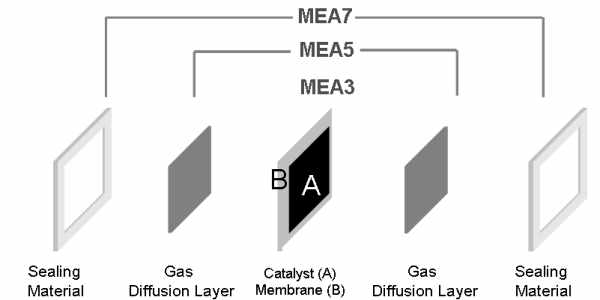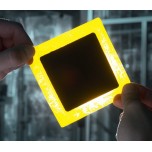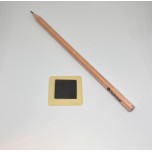Membrane Electrode Assemblies (MEA)
The Membrane Electrode Assembly (MEA) is the core component of a fuel cell that helps produce the electrochemical reaction needed to separate electrons. On the anode side of the MEA, a fuel (hydrogen, methanol etc.) diffuses through the membrane and is met on the cathode end by an oxidant (oxygen or air) which bonds with the fuel and receives the electrons that were separated from the fuel. Catalysts on each side enable reactions and the membrane allows protons to pass through while keeping the gases separate. In this way cell potential is maintained and current is drawn from the cell producing electricity.
A typical MEA is composed of a Polymer Electrolyte Membrane (PEM), two catalyst layers, and two Gas Diffusion Layers (GDL). A MEA with this configuration is known as a 5-Layer MEA due to its composition. An alternative version of a membrane electrode assembly is the 3-Layer MEA which is composed of a polymer electrolyte membrane with catalyst layers applied to both sides, anode and cathode. An alternative name for this type of MEA is a Catalyst Coated Membrane (CCM). See the diagram below for an example of each type:

A few key differences in the two types of MEAs, 5-Layer or 3-Layer, are the presence of a pre-selected GDL, and the location of the applied catalyst layers. In the 5-Layer MEAs, the GDL is a standard carbon cloth with a microporous layer (MPL) applied to one side of the cloth. The cloth is Teflon treated is assist in pushing the product water away from the catalyst sites, and the MPL is made of carbon powder that is made into a slurry with a Teflon solution and applied to the cloth to give a smooth surface to apply the catalyst and the layer is also electrically conductive while maintaining an open pore structure to allow the gases into the reaction sites. This setup is easier to apply the catalyst to and allows for quicker MEA fabrication.
The 3-Layer MEAs do not come with a GDL so that you may experiment with different GDLs for finding more optimal structures in your testing environment. The down side is that the catalyst must now be applied directly to the membrane which is more difficult since the membrane will swell as it gets wet. Both options will perform equally after the break-in period for the MEA, which is usually around 24hrs of operation. This operational period allows the product water to be distributed throughout the membrane and fully hydrate the MEA providing the reactant stoichiometries for the gas flow rates are kept low. 5-Layer MEAs are generally cheaper per MEA, whereas 3-Layer MEAs are more expensive due to the increase in time and labor for manufacturing.
We can supply MEAs for many applications including, Electrolyzers, Polymer Electrolyte Fuel Cells, Hydrogen / Oxygen Air Fuel Cells, Direct Methanol Fuel Cells, and many more! We offer quantity discounted pricing, so the more you buy, the more you save per MEA! Contact us for custom MEAs and CCMs and more information at sales@fuelcellstore.com.















